#cleaning guide
Text
How to Clean iPhone Charging Port: A Step-by-Step Guide
How to Clean iPhone Charging Port: A Step-by-Step Guide
One of the most common issues iPhone users face is a dirty or clogged charging port. When dirt, dust, and debris accumulate in the port, it can hinder the charging process and cause frustration. In this guide, we will show you how to clean your iPhone’s charging port effectively, ensuring that your device charges smoothly and…

View On WordPress
0 notes
Text

Ultimate Spring Cleaning Guide: Top Strategies for a Refreshed Home
Discover the most effective spring cleaning strategies in our Ultimate Spring Cleaning Guide. Learn step-by-step methods for tackling every corner of your home, from ceiling to floor. Enhance your living space by following our expert tips on natural light evaluation, vent maintenance, and more. Perfect your home's cleanliness and organization with Weekend Maids’ professional insights.
#cleaning guide#spring cleaning#home cleaning tips#effective cleaning strategies#professional cleaning advice#carpet cleaning#cleaning services#cleaningservices#house cleaning services#professional carpet cleaning#cleaning#best house cleaning san diego#dry cleaners#house cleaning#fresno housekeeping services
0 notes
Text
Your Ultimate Spring Cleaning Guide: A Step-By-Step Checklist
Your Ultimate Spring Cleaning Guide: A Step-By-Step Checklist - #homeimprovementreferral #Cleaning - https://www.homeimprovementreferral.com/your-ultimate-spring-cleaning-guide-a-step-by-step-checklist-2024-04/
#Cleaning#Cleaning Checklist#cleaning guide#Declutter#Deep Clean#Organize#organizing#spring cleaning#storage areas#storage solutions
0 notes
Text

Pricing your cleaning services is not a one-time task. Evaluating and adjusting your pricing strategy as market conditions and your business evolve is essential. By staying informed, providing exceptional service, and continually improving, you'll position yourself for long-term success in the cleaning industry.
0 notes
Text
Properly Wash Microfiber Cloths & Towels: An Essential How-To Guide
Microfiber cloths & towels have revolutionized cleaning practices worldwide. Comprising fine synthetic fibers, these cloths are celebrated for their ability to attract and hold dust, dirt, and liquid. Unlike traditional cleaning cloths, microfiber traps particles, ensuring a cleaner, more efficient wipe-down. Given their widespread use in both domestic and professional settings, understanding the proper care and maintenance of microfiber cloths is essential. This article delves into the best practices for washing microfiber cloths and towels, aiming to extend their lifespan and maintain their remarkable cleaning capabilities.
Importance of Proper Washing Techniques
The longevity and effectiveness of microfiber cloths heavily rely on how they are washed and maintained. Incorrect washing techniques can damage the fibers, thereby reducing their efficiency and lifespan. Proper cleaning not only preserves the microfibers but also ensures that they continue to perform at their best. From choosing the right washing method to selecting suitable detergents, this guide offers detailed instructions to ensure that your microfiber cloths remain a dependable cleaning tool.
Preparing Microfiber Cloths for Washing
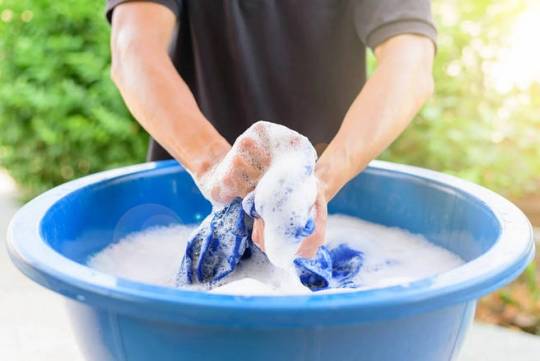
Hand Washing vs. Machine Washing
Deciding between hand washing and machine washing depends on the condition of the cloths. Hand washing is suitable for lightly soiled cloths and can be gentler on the fibers. In contrast, machine washing is more convenient for heavily soiled or stained cloths, offering a deeper clean.
Hand Washing Microfiber Cloths and Towels
Hand washing microfiber cloths is a simple yet effective way to clean them. Follow these steps:
Begin by shaking the cloth to release any loose dirt.
Fill a basin with cool or warm water. Hot water can damage the fibers, so avoid using it.
Submerge the microfiber cloths in the water. Gently agitate them by hand, focusing on heavily stained areas.
Let the cloths soak for about 15–20 minutes.
After soaking, rinse the cloths thoroughly under running water. Wring out excess water gently, being careful not to stretch the fibers.
Hand washing is ideal for maintaining the integrity of the microfibers, ensuring they continue to effectively trap dirt and debris.
Machine Washing Microfiber Cloths
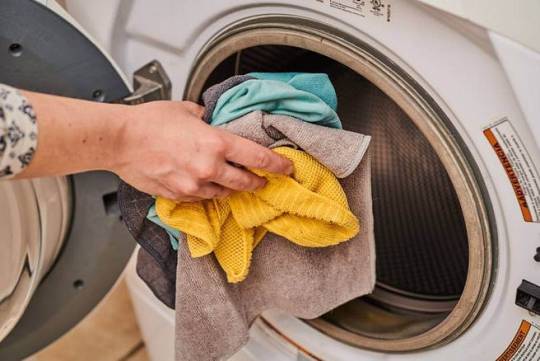
Machine washing microfiber cloths requires a gentle approach to preserve their cleaning efficacy:
Before washing, shake the cloths to remove excess dirt.
Use cold or warm water. Hot water can damage the microfibers.
Opt for a gentle, fragrance-free detergent. Avoid using fabric softeners or additives that can coat and clog the fibers.
If the cloths have a persistent odor, adding a tablespoon of white vinegar can help neutralize it.
Allow the machine to agitate the cloths for half of the cycle, then pause for a 15–20 minute soak.
Resume and complete the wash cycle.
These steps ensure that the microfibers are cleaned thoroughly without causing damage.
Temperature Settings and Detergent Choices
The ideal washing temperature for microfiber cloths is below 82 degrees Celsius. A mild, low-suds detergent is recommended. Fabric softeners and bleach should be avoided as they can degrade the microfiber’s cleaning ability.
Wash New Microfiber Towels First
It’s essential to wash new microfiber towels before their first use. Manufacturers often apply a silicone coating during production, which can impede the cloth’s ability to absorb liquids effectively. Washing new towels removes this coating, thus unlocking the full potential of the microfibers.
For the inaugural wash, it’s recommended to use a combination of white vinegar and laundry detergent. Add half a cup of white vinegar to the wash water, along with about half the usual amount of laundry detergent. The vinegar plays a crucial role in this process; it helps set the colors, ensuring they remain vibrant and fade less over time. Additionally, vinegar aids in removing any residual substances left from the manufacturing process, such as lint from the weaving.
This initial wash primes the towels for optimal performance. The removal of the silicone coating not only enhances the towels’ absorbency but also ensures that they are ready to tackle cleaning tasks more effectively from their very first use.
How Often to Wash Microfiber Towels
Microfiber cloths and towels should be washed frequently to maintain their cleanliness and effectiveness. If you’re using these towels for light tasks like dusting, they can be used several times before needing a wash. However, for heavier cleaning, such as in kitchens or bathrooms, it’s best to wash them after each use to remove dirt and bacteria.
For personal care or gym use, washing after every use is recommended to maintain hygiene. Consistent washing prevents the buildup of bacteria and odors. Remember to use a gentle detergent and wash according to the guidelines provided earlier in this article. Regular washing not only ensures cleanliness but also maintains the high absorbency and cleaning efficiency of your microfiber towels.
Drying Microfiber Cloths: Air-Drying and Machine Drying
Proper drying of microfiber cloths is as crucial as washing them correctly. There are two effective methods: air-drying and machine drying.
Air-Drying:
After washing, shake out the cloths to remove any excess water.
Hang the cloths in direct sunlight if possible. Sunlight has natural disinfecting properties.
If drying indoors, choose an area with good air circulation.
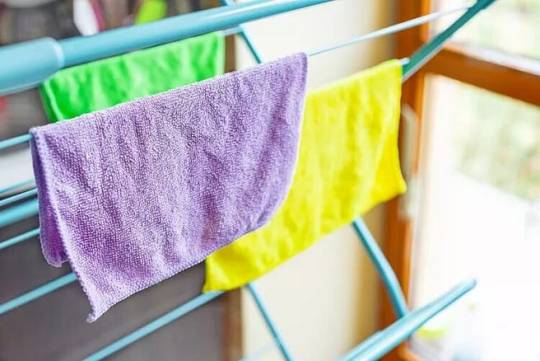
Machine Drying:
Dry microfiber towels separately from other items.
Before and after drying microfiber cloths, clean the dryer’s lint trap to avoid lint transfer.
Do not use dryer sheets or balls, as they can leave a residue on the microfibers.
Use a low heat or air-dry cycle to prevent damaging the fibers.
Both methods ensure that the cloths dry efficiently without compromising their structure or cleaning ability.
Maintenance Tips for Longevity of Microfiber Cloths
Proper maintenance of microfiber cloths is crucial for maximizing their efficiency and lifespan. Here are essential tips:
After each use, shake the cloth to remove loose debris and rinse it in warm water. This practice helps to dislodge dirt and maintain the cloth’s cleaning effectiveness.
Microfiber is most effective when used with water. If you must use cleaning solutions, opt for mild, non-abrasive options. Harsh chemicals can damage the microfibers and reduce their cleaning ability.
Store microfiber cloths separately from other cleaning materials to avoid cross-contamination and the transfer of lint or debris.
Clean your microfiber cloths regularly to prevent the buildup of dirt and bacteria. Regular cleaning also ensures that the cloths maintain their absorbency and cleaning efficiency.
Do not iron or expose microfiber cloths to high heat sources. Excessive heat can damage the fibers, leading to a loss of effectiveness.
Regularly inspect your microfiber cloths for signs of wear and tear. Replace them if they become overly worn or lose their effectiveness.
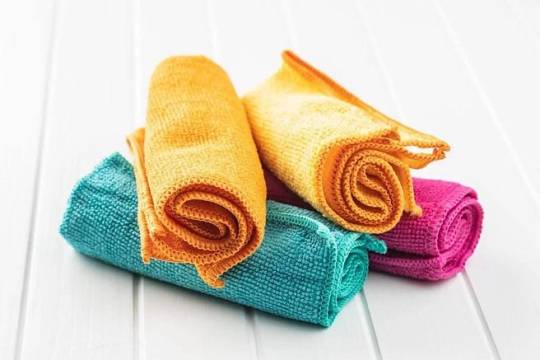
Common Mistakes to Avoid When Washing Microfiber Cloths
Ensuring the durability and functionality of microfiber cloths involves avoiding common washing mistakes:
Washing microfiber cloths with cotton or other lint-producing fabrics can lead to lint accumulation on the microfiber surface, reducing its cleaning capability.
Don’t overload the washing machine. Microfiber cloths expand and absorb more water than cotton, requiring more room to agitate and release trapped dirt.
Avoid using hot water as it can damage the microfibers. Stick to cold or warm water for optimal cleaning without causing harm to the cloths.
Steer clear of harsh detergents, fabric softeners, and bleach. These can coat and clog the microfibers, significantly diminishing their effectiveness.
Avoid high heat in the dryer. High temperatures can melt or damage the fibers. Opt for air-drying or low heat settings.
Always shake out the cloths before washing to remove loose debris. This prevents the redistribution of dirt during the wash cycle.
TIPS & TRICKS FOR WASHING MICROFIBER TOWELS
Knowing how to properly wash microfiber towels will help you keep them in good shape for effective cleaning.
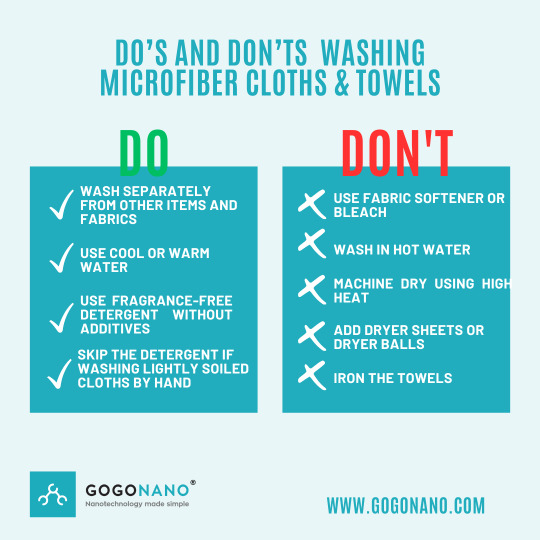
#microfiber cloths#microfiber towel#washing microfiber cloths#washing guide#cleaning guide#tips and tricks
0 notes
Text

wanted to post this on it's own because i spent so much time on it...
#glow up#glow up era#becoming that girl#that girl#dream girl#dream girl tips#dream girl guide#dream girl vibes#dream girl journey#pink pilates princess#pink pilates girl#it girl#it girl energy#clean girl#wonyoungism#girl blogger#just girly things#girlblogger
15K notes
·
View notes
Text
How To Become A Brand New Person ✨✨
Self Reflect:
Journal daily.
Think about past decisions and how they impacted your life.
Meditate regularly.
Create a vision board to visualize your goals.
Review your strengths and weaknesses.
Identify your core values and beliefs.
Figure out your passions and interests.
Think about your childhood dreams and aspirations.
Evaluate your current state of happiness and fulfillment.
Set Clear Goals:
Define specific career goals, like "Get promoted within two years."
Set health goals, like "Lose 20 pounds in six months."
Create financial goals such as "Save $10,000 for a vacation."
Establish personal development goals, like "Read 24 books in a year."
Set relationship goals, such as "Improve communication with my partner."
Define education goals, like "Complete a master's degree in three years."
Set travel goals, like "Visit five new countries in the next two years."
Create hobbies and interests goals, such as "Learn to play a musical instrument."
Set community or volunteer goals, like "Volunteer 100 hours this year."
Establish mindfulness or self-care goals, such as "Practice meditation daily."
Self Care:
Exercise for at least 30 minutes a day.
Follow a balanced diet with plenty of fruits and vegetables.
Prioritize getting 7-9 hours of quality sleep each night.
Practice in relaxation techniques like deep breathing or yoga.
Take regular breaks at work to avoid burnout.
Schedule "me time" for activities you enjoy.
Limit exposure to stressors and toxic people.
Practice regular skincare and grooming routines.
Seek regular medical check-ups and screenings.
Stay hydrated by drinking enough water daily.
Personal Development:
Read a book every month from various genres.
Attend workshops or seminars on topics of interest.
Learn a new language or musical instrument.
Take online courses to acquire new skills.
Set aside time for daily reflection and self improvement.
Seek a mentor in your field for guidance.
Attend conferences and networking events.
Start a side project or hobby to expand your abilities.
Practice public speaking or communication skills.
Do creative activities like painting, writing, or photography.
Create a Support System:
Build a close knit group of friends who uplift and inspire you.
Join clubs or organizations aligned with your interests.
Connect with a mentor or life coach.
Attend family gatherings to maintain bonds.
Be open and honest in your communication with loved ones.
Seek advice from trusted colleagues or supervisors.
Attend support groups for specific challenges (e.g., addiction recovery).
Cultivate online connections through social media.
Find a therapist or counselor for emotional support.
Participate in community or volunteer activities to meet like minded people.
Change Habits:
Cut back on sugary or processed foods.
Reduce screen time and increase physical activity.
Practice gratitude by keeping a daily journal.
Manage stress through mindfulness meditation.
Limit procrastination by setting specific deadlines.
Reduce negative self-talk by practicing self-compassion.
Establish a regular exercise routine.
Create a budget and stick to it.
Develop a morning and evening routine for consistency.
Overcome Fear and Self Doubt:
Face a specific fear head-on (example: public speaking).
Challenge your negative thoughts with positive affirmations.
Seek therapy to address underlying fears or traumas.
Take small, calculated risks to build confidence.
Visualize success in challenging situations.
Surround yourself with supportive and encouraging people.
Journal about your fears and doubts to gain clarity.
Celebrate your accomplishments, no matter how small.
Focus on your strengths and accomplishments.
Embrace failure as a valuable learning experience.
Embrace Change:
Relocate to a new city or country.
Switch careers or industries to pursue your passion.
Take on leadership roles in your workplace.
Volunteer for projects outside your comfort zone.
Embrace new technologies and digital tools.
Travel to unfamiliar destinations.
Start a new hobby or creative endeavor.
Change your daily routine to add variety.
Adjust your mindset to see change as an opportunity.
Seek out diverse perspectives and viewpoints.
Practice Gratitude:
Write down three things you're grateful for each day.
Express gratitude to loved ones regularly.
Create a gratitude jar and add notes of appreciation.
Reflect on the positive aspects of challenging situations.
Show gratitude by volunteering or helping others in need.
Send thank-you notes or messages to people who've helped you.
Keep a gratitude journal and review it regularly.
Share your gratitude openly during family meals or gatherings.
Focus on the present moment and appreciate the little things.
Practice gratitude even in times of adversity.
Be Patient:
Set realistic expectations for your progress.
Accept that personal growth takes time.
Focus on the journey rather than the destination.
Learn from setbacks and view them as opportunities to improve.
Celebrate small milestones along the way.
Practice self-compassion during challenging times.
Stay committed to your goals, even when progress is slow.
Keep a journal to track your personal growth.
Recognize that patience is a valuable skill in personal transformation.
Celebrate Small Wins:
Treat yourself to your favorite meal or dessert.
Reward yourself with a spa day or self-care activity.
Share your achievements with friends and loved ones.
Create a vision board to visualize your successes.
Acknowledge and congratulate yourself in a journal.
Give yourself permission to take a break and relax.
Display reminders of your accomplishments in your workspace.
Take a day off to celebrate a major milestone.
Host a small gathering to mark your achievements.
Set aside time to reflect on how far you've come.
Maintain Balance:
Set clear boundaries in your personal and work life.
Prioritize self care activities in your daily routine.
Schedule regular breaks and downtime.
Learn to say "no" when necessary to avoid overcommitment.
Evaluate your work life balance regularly.
Seek support from friends and family to avoid burnout.
Be kind to yourself and accept imperfections.
Practice mindfulness to stay present and grounded.
Revisit your priorities and adjust them as needed.
Embrace self love and self acceptance as part of your daily life.
#personal improvement#personal development#personal growth#self help#self awareness#self reflection#self improvement#level up journey#self love journey#dream girl guide#dream girl journey#dream girl tips#becoming that girl#that girl#it girl#glow up tips#glow up#clean girl#pink pilates girl#divine feminine#femininity#femme fatale#feminine journey
6K notes
·
View notes
Text
https://www.wakefit.co/guides/cleaning-upholstery-in-indian-homes/
0 notes
Text
SF Window Cleaning provides window cleaning services for residential and commercial properties. We use environmentally friendly cleaning solutions to ensure the safety of our clients and the environment. The services offered by SF Window Cleaning include interior and exterior window cleaning, screen cleaning, and skylight cleaning. Please feel free to contact us for a quote.
#Cleaning#cleaning guide#cleaning house#Cleaning windows#window cleaner forres#window cleaning service#window cleaning company#window cleaning services
0 notes
Text
Becoming a ☆Dream Girl☆
Who doesn’t want to be a dream girl? Put together, always smells nice, radiant, confident, cute, and content. Where does one even begin when trying to embody that dream girl energy?! Well, with a few practical changes to my life and routines, I’m starting to feel more confident in myself and in love with my appearance and my own energy. Here’s what I’m doing to become my own dream girl!
- Overnight Curls and Wave! I’m going to start wearing my hair in braids or curlers when I go to bed so I can wake up with beautiful, dreamy hair.
- Wake Up Earlier. I need to build in time to my schedule to be able to properly get ready in the morning! I usually roll out of bed, do my hair very fast, brush my teeth, put on clothes, and run out the door. If I want to start doing beauty routines and investing more time into myself, I need to wake up earlier! My ideal routine is:
• Wash face
• Brush teeth
• Sunscreen & makeup
• Hair
• Outfit & accessories
• Fragrance
• Breakfast!
- Simple Makeup. Sunscreen, blush, highlighter, mascara, and tinted lip balm or lip gloss would make me look radiant and angelic everyday!
- Work Out 30 Minutes 6 Days a Week! I have a family history of high blood pressure LOL so I think I should begin experimenting with exercise and learning how to move my body in ways that I enjoy while I’m still young :)
- Body Care / Skin Care! I’m going to buy salicylic acid body wash and a fragrance free moisturizer to prevent acne, hydrate my skin, and make my body glow.
- Pick a Signature Fragrance! I want to pick a signature scent for everyday, and possibly a scent for special events! I think I prefer picking a scent that matches each season, so I can have some variation throughout the year. Here’s the perfumes I own so far:
• Love’s Baby Soft (Summer)
• Juicy Couture Viva La Juicy (Fall)
• YSL Mon Paris (Winter)
• Marc Jacobs Honey (Spring)
• Sabrina Carpenter Sweet Tooth
#glow up era#glow up#girlhood#girlblogging#dream girl#that girl#glow up diaries#dream girl journey#dream girl tips#dream girl guide#just girly things#just girly posts#just girly thoughts#im just a girl#it girl#clean girl#girl blogger#girly things#girl blogging#girl blog
1K notes
·
View notes
Text
Tips For Achieving A Long-Lasting, Streak-Free Shine When Cleaning Your Windows
Tips For Achieving A Long-Lasting, Streak-Free Shine When Cleaning Your Windows - #homeimprovementreferral #Cleaning, #HomeCleaning, #HomeImprovement, #Tips - https://www.homeimprovementreferral.com/tips-for-achieving-a-long-lasting-streak-free-shine-when-cleaning-your-windows-2023-04/
#clean windows#Cleaning#cleaning guide#Cleaning service#cleaning solutions#cleaning tips#commercial products#Home Cleaning#home cleaning process#home improvement#home made solutions#household cleaning#streak free#window cleaning#window frames#window material
1 note
·
View note
Text
Laundry Sheets Versus Traditional Detergents: Assessing the Superior Cleaning Solution
In the quest for clean clothes, consumers are faced with a choice: traditional laundry detergents or the newer, eco-friendly laundry detergent sheets. This guide delves into the world of laundry care, comparing these two options in terms of production, usage, and environmental impact, providing you with the knowledge to make an informed decision.
Understanding the Basics
Understanding the fundamental differences between traditional detergents and the newer laundry sheets is essential. Traditional detergents have long been the go-to choice, with their tried-and-tested formulas designed to combat a wide array of stains and odors. On the other hand, laundry sheets represent the cutting edge of laundry technology, offering an eco-friendly, convenient solution that caters to the needs of the environmentally conscious consumer without compromising on cleaning power.
What Are Traditional Laundry Detergents?
Traditional laundry detergents have been the cornerstone of laundry care for decades. These detergents come in various forms, including powders, liquids, and pods, and contain a mix of surfactants, enzymes, bleaches, and builders to tackle different stains and odors. They are designed to work in a range of water temperatures and are packaged in plastic jugs or cardboard boxes.
What Are Laundry Sheets?
Laundry detergent sheets are an innovative addition to the laundry aisle. These thin, biodegradable sheets are infused with concentrated detergent and dissolve completely in water. They offer a pre-measured, mess-free alternative to traditional detergents and are typically hypoallergenic, free from harsh chemicals, and come in recyclable or compostable packaging.
Production and Manufacturing
Exploring the contrast in laundry detergent production, this section examines the resource-intensive traditional methods and the sustainable practices shaping the future of laundry care.
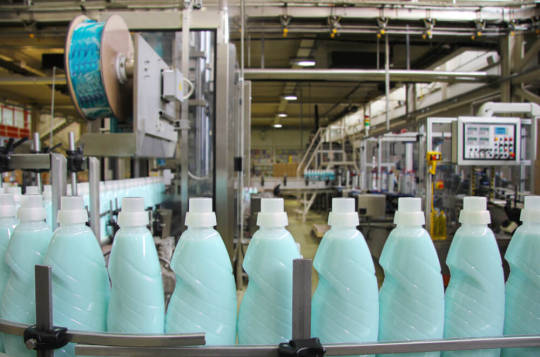
How Traditional Detergents Are Made?
The creation of traditional laundry detergents is an intricate process carried out in expansive industrial complexes. It starts with producing synthetic surfactants, the primary cleaning agents, often derived from petrochemicals through energy-intensive reactions. These surfactants are combined with a host of other chemicals like builders to soften water, enzymes to tackle proteins and starches, and additional agents such as fragrances and optical brighteners for aesthetic appeal. While these ingredients enhance the cleaning properties and sensory experience, they can be environmentally persistent and potentially harmful to aquatic ecosystems upon entering water bodies.
Considerable water is used in making liquid detergents, and the energy consumed in heating and transporting these products adds to their carbon footprint. The packaging of these detergents, predominantly plastic, presents further environmental challenges. Many of these plastics are not fully recyclable, leading to an accumulation of waste in landfills and oceans, where they can take centuries to break down, leaking pollutants and posing risks to wildlife. The environmental impact of these practices has led to a push for more sustainable laundry products that prioritize biodegradable ingredients, reduced packaging, and energy-efficient production.
The Creation of Laundry Sheets
Laundry sheets are developed through eco-friendly processes that significantly reduce the consumption of water and energy. Active ingredients are applied onto sheets made from biodegradable materials, allowing them to decompose naturally and lessen the environmental impact. The production of these sheets focuses on a minimalist approach, not only in the product design but also in the packaging, which utilizes materials that are recyclable or compostable, aligning with a commitment to sustainability.
Chemical Composition and Skin Sensitivity
This section delves into the chemical makeup of laundry detergents and their implications for skin sensitivity. We’ll uncover how the traditional detergent industry’s reliance on harsh chemicals contrasts with the emerging trend of laundry sheets that prioritize skin health and environmental sustainability. Additionally, we’ll highlight the innovative formulations of laundry sheets that are setting new standards for gentle, skin-friendly cleaning.
Chemicals in Traditional Detergents
Traditional detergents can contain a variety of chemicals that may cause skin irritation or allergic reactions in sensitive individuals. Phosphates, which are often used to soften water and improve cleaning efficiency, can lead to skin problems and have a detrimental effect on aquatic life when they enter waterways.
How Does Traditional Laundry Detergent Harm The Environment
Laundry detergent is far more than just a basic cleansing soap. It contains a huge number of harmful chemicals that have a serious impact on our environment. Some of the most concerning ones are:
Phosphates – linked to cardiovascular (heart) disease as well as osteoporosis. These toxins are particularly damaging to the marine environment when dispersed in wastewater from your wash.
Bleach – often used to brighten whites, its toxic fumes cause respiratory distress and on contact with skin and eyes it is able to cause caustic burns.
Formaldehyde – A chemical usually associated with the preservation of dead bodies. This toxic ingredient as classified by the EPA, is a class B1 probable carcinogen. This means it has been linked with an increased risk of cancer.
Ammonium Sulfate and Ammonium Quaternary Sanitizers – harsh cleansing agents that are corrosive and toxic. They can cause eye, skin and lung damage even with minimal exposure.
Dioxane (1,4 Dioxane/ Diethylene Dioxide/ Diethylene Ether/ Dioxan) is quite possibly one of the worst additives. Dioxane is also a carcinogen and has been known to pose a combustion risk. Exposure to this toxin can damage your kidneys, lungs, central nervous system, eyes, skin and respiratory function.
The Hypoallergenic Nature of Laundry Sheets
Laundry sheets are intentionally formulated with a minimalistic chemical composition, often utilizing natural ingredients and plant-based surfactants. This streamlined approach not only reduces potential skin irritants but also caters to those with sensitive skin or allergies. Unlike traditional detergents, which may contain a plethora of synthetic chemicals, laundry sheets opt for milder cleaning agents that provide effective cleaning without the risk of allergic reactions. Their hypoallergenic properties make them a preferred choice for consumers seeking a skin-friendly laundry solution.
Moreover, the gentleness of laundry sheets extends to the care of fabrics. They are designed to clean without compromising the textile’s structure, thereby preserving the longevity of clothing. The environmental benefits are equally significant; the biodegradable nature of these sheets means they break down naturally without leaving harmful residues in water or soil, aligning with eco-conscious practices and reducing the ecological impact of laundry activities.

Usage and Efficacy
Laundry sheets are redefining fabric care with their innovative approach to efficacy and usage. These eco-friendly alternatives to traditional detergents deliver effective cleaning power in a pre-measured, dissolvable sheet, minimizing waste and preventing the common issue of detergent residue. While traditional detergents offer a broad spectrum of enzymes for various stains, laundry sheets maintain a competitive edge with their simplicity and suitability for both hot and cold water cycles, catering to the needs of the environmentally and health-conscious consumer.
Effectiveness of Traditional Detergents
Traditional detergents have been optimized for performance across a spectrum of conditions. They are formulated to work in various water temperatures, from cold to hot, and are effective for different load sizes. The presence of specific enzymes and other chemicals in these detergents means they can tackle a wide range of stains, from protein-based to grease and oil.
However, the effectiveness of traditional detergents can be influenced by the hardness of the water and the accuracy of the dosage. Overuse is common, leading not only to wasted detergent but also to potential residue on clothes and in machines.
Performance of Laundry Sheets
Laundry sheets are designed for convenience and simplicity. They dissolve easily in both hot and cold water and are pre-measured to avoid the issue of overuse. While they may not contain the same range of targeted enzymes as traditional detergents, many users find them effective for general laundry needs and appreciate the added benefit of fabric care due to their gentle formulation.
Comparative studies and consumer feedback suggest that laundry sheets perform well in everyday laundry scenarios, though heavily soiled items may require additional treatment or a double dose of the product.
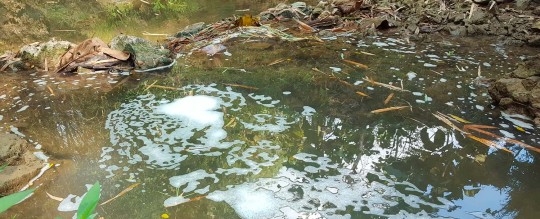
Environmental Impact
The Ecological Footprint of Traditional Detergents
The environmental impact of conventional laundry detergents is increasingly recognized. These detergents often fail to fully biodegrade, releasing harmful substances into our water systems, including rivers and oceans. Toxic elements such as cadmium and arsenic, which are sometimes present in detergents, can pose significant risks to aquatic ecosystems. Research indicates that phosphates, frequently used in these cleaning products, accumulate in bodies of water, causing eutrophication. This process results in excessive algal growth, which depletes oxygen in the water and can suffocate aquatic life, including fish and plants.
The Sustainable Advantage of Laundry Sheets
Laundry sheets are at the forefront of sustainable fabric care, distinguished by their environmentally conscious components and manufacturing process:
Plant-Based Surfactants: Unlike traditional detergents that rely on petrochemicals, laundry sheets use surfactants derived from renewable plant sources, which offer effective cleaning while being more gentle on the environment.
Biodegradable Fibers: The structural material of the sheets is composed of biodegradable fibers that break down naturally, leaving no harmful residues in the ecosystem.
Natural Enzymes: To tackle various stains, laundry sheets incorporate enzymes sourced from natural organisms, ensuring biocompatibility and reducing the risk of aquatic toxicity.
Minimalist Packaging: Emphasizing sustainability, the packaging of laundry sheets is designed to be either fully recyclable or compostable, contributing to waste reduction goals.
Carbon Footprint Reduction: The compact and lightweight format of laundry sheets significantly lowers the carbon emissions associated with their transportation and distribution.
Water Conservation: By providing a pre-measured amount of detergent, laundry sheets eliminate the common problem of overuse, saving water and reducing the frequency of purchasing new detergent.
Cost Analysis
The Economic Costs of Traditional Detergents
When considering the economic implications of traditional detergents, the initial purchase price represents just a fraction of the actual cost. Consumers often use more detergent than necessary, influenced by the misconception that more soap equals cleaner clothes. This habit of overuse not only increases household expenses over time but also accelerates the depletion of detergent supplies, necessitating more frequent purchases. Furthermore, the environmental degradation caused by these detergents, including water pollution and the energy-intensive production process, incurs hidden costs that are absorbed by communities and ecosystems.
These hidden environmental costs have far-reaching economic consequences. The pollution of waterways necessitates additional treatment for safe use, which can strain municipal budgets and lead to increased utility bills for residents. Waste management becomes more complex and costly as well, with plastic packaging from detergents contributing to the growing volume of refuse that requires processing. Over time, these environmental and societal costs can lead to higher taxes and living expenses, illustrating that the true cost of traditional detergents extends well beyond their shelf price.
Cost-Effectiveness of Laundry Sheets
Laundry sheets offer a more economical alternative to traditional detergents over time. Their pre-measured design eliminates the guesswork and prevents the common issue of detergent overuse, ensuring optimal use of every sheet. This not only conserves the product but also translates into direct savings for consumers, who will purchase laundry detergent less frequently. Additionally, the compact and lightweight nature of laundry sheets reduces manufacturing and shipping costs. These savings can be passed on to the consumer, making laundry sheets a cost-effective choice.
The environmental advantages of laundry sheets also contribute to their cost-effectiveness. By minimizing the use of plastics in packaging and reducing the reliance on harsh chemicals, laundry sheets lessen the burden on waste management systems and decrease the need for environmental remediation efforts. These reductions have a ripple effect, potentially lowering community expenses related to waste processing and health care costs linked to chemical exposure. Thus, the economic benefits of laundry sheets extend beyond immediate savings, contributing to broader financial advantages for both individuals and society.
Consumer Convenience and Accessibility
Accessibility of Traditional Detergents
Traditional detergents enjoy a stronghold in the marketplace, largely due to their pervasive presence across various retail environments. From expansive supermarkets to modest corner shops, these detergents are readily available, making them a convenient choice for the everyday shopper. The extensive distribution network of these products ensures that they are within easy reach for most consumers, contributing to their continued popularity.
This market saturation is underpinned by years of established brand presence and consumer loyalty, which have been cultivated through persistent marketing efforts and ongoing product innovation. Such brand familiarity reassures consumers, often making traditional detergents a default purchase. The result is a self-reinforcing cycle of accessibility and demand, maintaining the status quo of traditional detergents as a household staple.
The Rising Popularity of Laundry Sheets
Laundry sheets are a relatively recent innovation in the home care market, but they are quickly carving out a significant niche. Their appeal lies in the combination of user-friendly convenience and a strong eco-conscious ethos, which aligns with the values of a growing segment of consumers. The shift towards environmentally responsible products has been a key driver in their burgeoning popularity.
Moreover, the advent of e-commerce has played a pivotal role in making laundry sheets more accessible to a wider audience. They are prominently featured on various online shopping sites, dedicated platforms for sustainable goods, and are increasingly making their way onto the shelves of traditional retail outlets. This expanding availability is a testament to the changing consumer preferences and the evolving landscape of the household cleaning market, where sustainability is becoming as important as efficacy.

Disposal and Recycling
Disposal Issues with Traditional Detergent Containers
The disposal of traditional detergent containers poses significant challenges. While many are technically recyclable, the reality is that a substantial portion ends up in landfills due to contamination or improper disposal. The impact of this plastic waste is far-reaching, contributing to the growing problem of environmental pollution and the depletion of resources required to produce new plastic containers.
Disposal of Laundry Sheets
In contrast, laundry sheets offer a more environmentally friendly end-of-life scenario. Their packaging is often designed to be compostable or recyclable, aligning with zero-waste principles. The sheets themselves, being biodegradable, leave no trace once they dissolve in water, which significantly reduces their environmental impact compared to traditional detergents.
The Future of Laundry Detergents
Innovations in Traditional Detergent Formulations
The landscape of the detergent industry is dynamic, with continuous advancements shaping the future of laundry care. Recognizing the growing environmental concerns, many detergent brands are actively seeking to minimize their ecological footprint. This pursuit of sustainability has led to the creation of highly concentrated detergent formulas, which deliver the same cleaning power in smaller doses, thereby reducing the need for excessive packaging.
Alongside concentration, there’s a shift towards incorporating plant-derived ingredients, which are gentler on the environment and often renewable. These natural components are increasingly replacing their synthetic counterparts, contributing to a cleaner production process and a safer product for both consumers and the planet. Additionally, the industry is experimenting with refillable detergent systems, aiming to cut down on single-use plastic containers and encourage a reuse mindset among consumers, further aligning product design with environmental responsibility.
The Evolution of Laundry Sheets
Laundry sheets stand at the forefront of innovation within the home care sector, with their trajectory set towards expansion and refinement. Technological advancements are paving the way for these products to boast enhanced cleaning efficacy, catering to a variety of fabric types and stains with greater precision. As the industry evolves, consumers can anticipate a wider selection of fragrances and specialized features tailored to specific laundering needs, from delicate care to robust stain removal.
The environmental aspect of laundry sheets is also expected to improve, with ongoing research into even more sustainable materials and manufacturing processes. The commitment to eco-friendliness is a strong selling point that resonates with the modern consumer, and as awareness of environmental issues grows, so does the demand for products that align with a sustainable lifestyle. This growing consumer consciousness is likely to drive further innovations in laundry sheets, ensuring they not only clean clothes effectively but also contribute positively to the health of our planet.
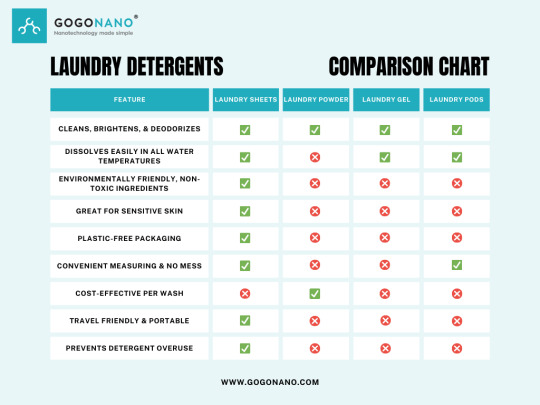
Final Thoughts
Throughout this guide, we have delved into the complex world of laundry care, examining the strengths and weaknesses of both traditional detergents and the emerging laundry detergent sheets. We’ve seen how the tide is turning in favor of sustainability in our cleaning habits, a change driven by increased global awareness and responsibility. As the public becomes more attuned to the environmental ramifications of their choices, laundry sheets emerge as a beacon of innovation, offering a path to a more sustainable and environmentally considerate future in home care. Embrace the change and join the movement towards a cleaner planet—make the switch to GoGoNano laundry detergent sheets today and be part of the solution for a greener tomorrow.
#nanotechnology#ecofriendly#sustainability#zerowaste#laundry sheets#laundry detergent sheets#laundry strips#plastic free laundry detergent#cleaning guide#gogonano
0 notes
Text
Cleaning upholstery in India was never this easy. Learn to remove stains as you read this guide to clean any upholstery material at home!
0 notes